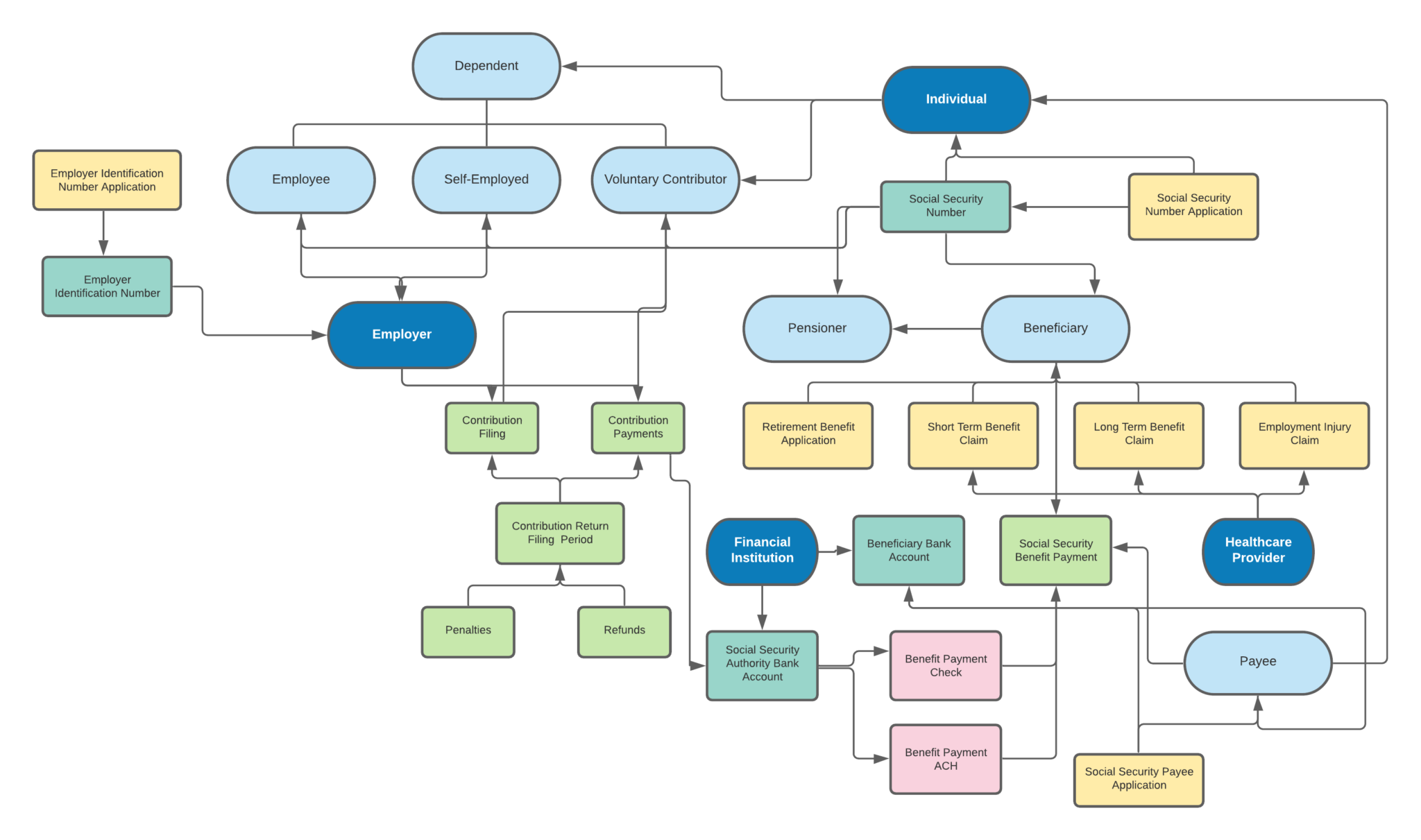The Interact Social Security Administration System (“SSAS”) is the first enterprise software solution of its kind that is specifically developed to cater to the needs of international social security organizations, national insurance boards and provident funds.
The SSAS suite is a global social security management system designed to support the social security administration or insurance board rules, regulations, and laws by country. Interact SSAS is an extension of Interact HRMS and uses the same architecture, business framework, and technology. The system is designed using a country and policy-based framework, where the social security administration policies are defined by country. This Country Policy Framework provides the required flexibility to setup the system for any country based on the social security policies of that country. Social security or insurance benefit policies can be amended and modified by the authorized user using the setup without the need for source code or programming changes.
Until now, social security organizations and those similar in nature, have struggled with the lack of available systems that specifically cater to their needs. The need for scalability, breadth of functionality and the unique required feature set itself have prevented many social security agencies around the world from upgrading their custom-built systems with which they automated their most routine transactions back in the 70s and 80s. These organizations now find themselves working with heavily outdated solutions which were custom-built for them, often at great cost and for which the original developers are no longer available.
Interact SSAS is the first solution built by an international enterprise software vendor with the specific purpose of covering all core business requirements of a regular social security organization. It is not just a customization of existing HRMS functionality: it is an entirely new set of modules designed as an extension of a global enterprise HRMS. The core business processes supported are:
Now, all of these features and much more are all available in a single suite, the Interact SSAS suite which leverages the proven technology of Interact HRMS in the Cloud and On Premise.
Interact SSAS has the following two main entities: Employers & Individuals.
Individuals can be tracked with their Dependents. Each Individual can request a Social Security Number by submitting an online Social Security Number Application.
Once a Social Security Number has been assigned, the individual will be an Insured Persons and can be enrolled as Employee if they are employed with an Employer.
The Employer also needs to have filled in an online Employer Identification Number application in order to obtain such EIN.
Employers will then have to file regular Social Security Contribution or Tax returns with the appropriate Social Security or National Insurance organization where they report wages paid for each employee by week, month or quarter, depending on the local regulations.
Based on the Contribution Rates defined, the system will indicate the Contribution Amount or Social Security Tax which the Employer has to pay for the wages and the Employer can either pay online via eServices or pay by visiting the Social Security/National Insurance offices.
The Social Security Tax or Contribution Return Period is fully configurable and can be set as per the country’s Social Security laws, including support for different Contribution Return Periods depending on the type of Employee or Contributor, i.e. regular Employees, Voluntary Contributors or Self-Employed. Each category of Individuals can have their own frequency of filing Social Security Tax or Contribution Reports.
Employers who file late, can be automatically assessed a Penalty, which the system will calculate based on local regulations and system settings. The Penalty can be applied for Late Filing and Late Payment.
Employers can also request Refunds of Contributions which were paid in error if this is applicable as per local regulations.
Insured Persons or Individuals can also become Beneficiaries in which case they will be able to benefit from certain Benefit Entitlements which are defined in the system as per standard Benefit and Benefit Entitlement Policies which are applicable in the country.
One unique type of Beneficiary is the Pensioner, who receives an Old Age, Invalidity and/or Survivor’s Pension. Such Pensioner will first need to submit a Social Security Retirement Benefit Application. Once the Benefit Application is approved and processed, the Pensioner or Retiree will start receiving the appropriate Retirement Benefit Payments in their account or by cheque, depending on the method requested by the Pensioner for receiving Payment.
Payments will be processed directly from the system by the Social Security Agency user and can be done in Cash, by Cheque or via Electronic Deposit using ACH or other Bank formats as applicable with local banks.
For each type of Benefit the Beneficiary can file a different type of Application or Claim. At a minimum, there are claims for Lump Sum Benefits, Survivor Benefits and Disability Benefits available. Each with their own online form which will capture the unique details required for processing that particular type of Benefit.
Apart from filing the Application for Retirement, Lump-Sum, Survivor or Disability Benefits, the Beneficiary will also need to indicate who will be the Payee. The Payee can be the Beneficiary themselves, or it can be a Third Party Payee for which a Third Party Payee Application must be filed and approved so the Payee can start receiving payments on behalf of the Beneficiary who is entitled to the Benefit.
Since Interact SSAS is a Policy Driven application, all the business rules and settings related to this are user defined and configurable through the parameter settings that are accessible at the system level of the application. Changes can be made without the need for source code changes, through the manipulation of the parameters only.

